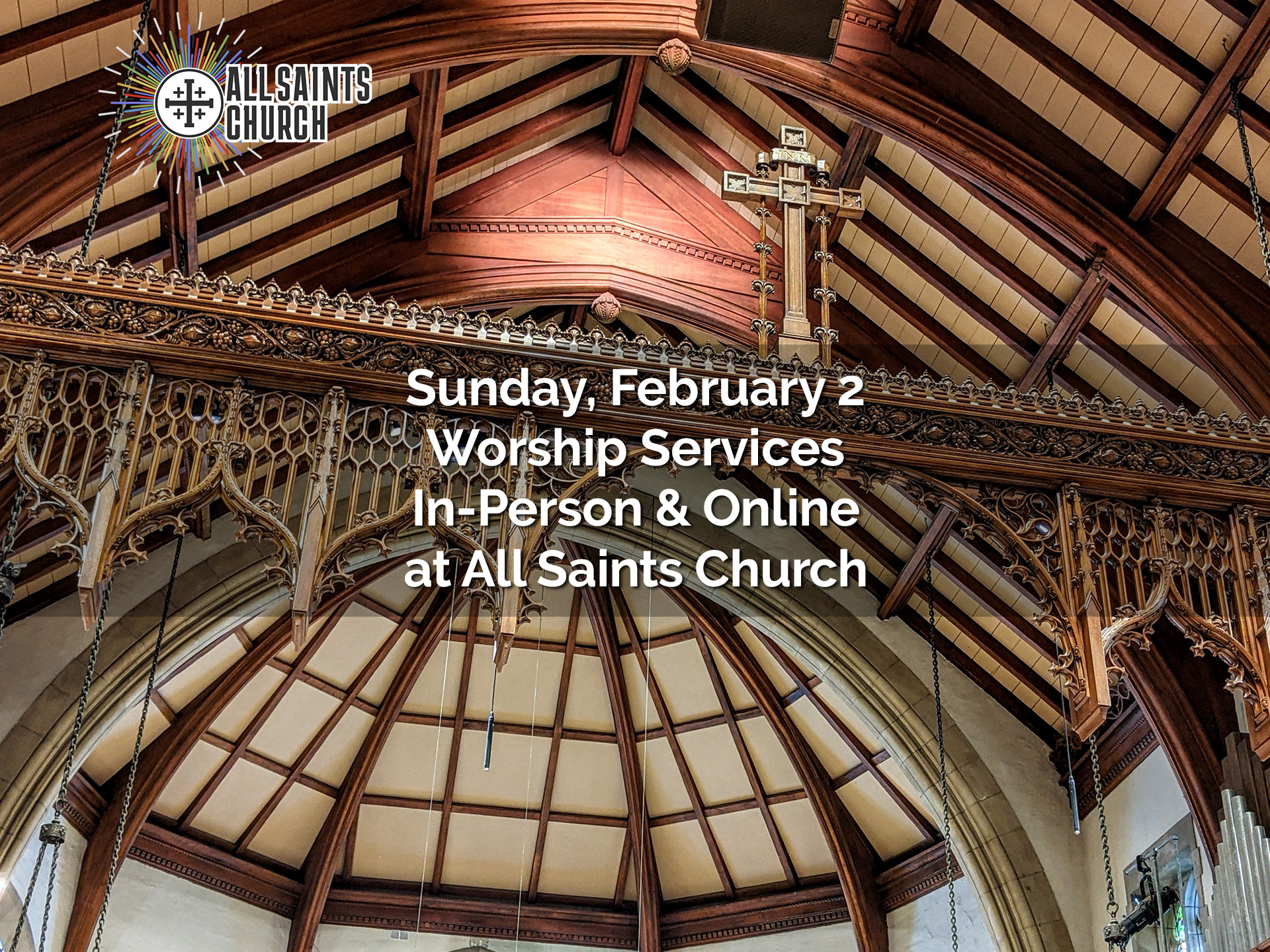“…What if the child born of Mary had been a little girl? Jesus came as an illegitimate and poor baby from the margins. That made it difficult for the community to accept that he could be the Messiah. They were waiting for a leader skilled in using power over others, not a vulnerable infant depending on the love of a woman. If Jesus had been a girl, would anyone have ever heard his message at all?”
Sermon by Sally Howard at All Saints Church, Pasadena, on Christmas Eve, 5:30 p.m., Monday, December 24, 2018.
At that moment, the first heavenly messenger was joined by thousands of other messengers—a vast heavenly choir.
They praised God:
To the highest heights of the universe, glory to God!
And on earth, peace among all people!
Amen
The Christmas story is a rich tapestry of experience and emotion. It evokes in us feelings of joy, fear, and pain. We feel the exhaustion, the longing for home and the desperation of being turned away. There is wonder and awe at Love that opens onto and into God.
Where do you find yourself on this night of all nights? What tapestry of experience do you bring to the chorus? The beauty of this night and the power of this story is that whoever you are and where ever you are on your journey of faith, God welcomes you here, And we welcome you tonight to this community of God’s inclusive love.
I have a very distinct memory of earlier Christmas Eve’s in my life as a child and teenager in a small church in Winona Lake IN, in which my mother was the organist. Now there are some advantages and some disadvantages to having your mother be the church organist. The disadvantage was that she could see everything that happened in the pews, and she was capable of bringing us into conversation about our behavior just from the look on her face. All five of her children knew this fact up front and personally! A significant advantage was that I witnessed the faithful dedication she had week after week. It was a spiritual act of worship and it left a deep impression on me. I didn’t recognize it as leadership because it was one of those things women were allowed to do in church. It was a given that only men could be ministers or priests, and it certainly never occurred to me that I would become one. What would my life have been like if I had grown up today?
Back to my understanding of Christmas in Winona Lake. In that context, Christmas Eve was sometimes not so joyful and often confusing. The story of God Emmanuel was one of guilt and fear. I learned that God appeared as the baby Jesus, but that Jesus wouldn’t have had to do it, if we weren’t so bad and God the Father wasn’t so mad. Although no one ever said it directly, as one who identified as female, I had a vague notion that I was a little more responsible for Jesus’ suffering than my brother. After all, hadn’t Eve ruined everything from the get go? God was understood as male and Jesus’ birth as a male was understood as the natural order of God for salvation, like a prince who inherited his position from his father the king. It was confusing, because I knew in my heart that God loved me, and all people of the world-I had learned that from my grandmother. It was confusing because the women in my family were strong and courageous, outspoken and politically involved. They spoke about God with passion and wisdom to me, but never in front of the congregation. I believed myself to be a bearer of God’s image, but unequal and a less capable member of God’s family.
What if we look at the Christ Child through a different lens? The mystery of God transcends all images and is properly understood as neither male nor female. God transcends these binaries. God creates male and female and gender fluid people in the image of God and all can be used as metaphors to point to the whole of divine mystery. All are meant to help us understand each other, ourselves, and God in ways that heal and cause us to flourish. Let’s look at the birth of Jesus through the lens of the suppressed world of female symbolism—and also through the lens of She Who Is.
There are many female images for God in the Hebrew Bible. The most fully developed female biblical image for God is in the wisdom literature of ancient Israel. In these, “the wisdom of God”, or Sophia, is often personified as a woman. She was with God before creation, and she was the master worker through Whom God created.
In the Wisdom of Solomon, Sophia is “the fashioner” and “mother” of all good things. She is intelligent, holy, unique, humane, steadfast, and free from anxiety. Sophia all-powerful, overseeing all, and penetrating through all. These are, of course, attributes of God.
In the first chapter of John, what the author says about “the Word of God” was said about Sophia in the Jewish tradition. Like the Word, Sophia was present with God before creation. Just as the Word was with God and was God, so Sophia was.
Reprising biblical metaphors gives concreteness to God’s maternal, compassionate power. “El Shaddai,” one of the Hebrew names of God, is most often translated into English as “God Almighty.” But its linguistic roots suggest that it meant “breasted God”—God as “mother,” not “father.” In Isaiah, God the mother cries out in terrible labor to deliver the new creation of justice. She suckles the newly born, teaches toddlers to walk, bends down to feed them and carries them about, bearing them from birth even to old age with its gray hairs. She is like a hen that gathers her chicks under wing, a very present help when trouble arises. In Jeremiah when God remembers Israel, it’s translates as “My womb trembles for him; I will truly show motherly-compassion on him.” Her mercy, “haced” in Hebrew, is a “fierce bonding love”. She leads her children with “kindness and with love, not with ropes.” “I held them close to me,” she says, “I raised them up to my cheek.” God looks upon all beings with a mother’s love that makes the beloved beautiful. As a mother comforts her child, so too she comforts those who lament.
As She carries and comforts, the Mother-Creator seeks to overcome whatever destroys beloved creation. In one prophetic image, God is as furious as a mother bear deprived of her cubs.
By the power of her mighty Spirit, she gives birth anew to those who receive her word. Her great compassion or womb-love wipes out offenses, restoring a clean heart to those who seek forgiveness. The result of her ministrations is a new spirit and the joy of well-being that comes with right relation to the one who gave you birth.
The maternal source and compassion matrix of the universe is also its goal, the point of homecoming at the end of the journey. When human energy collapses, Mother-Sophia has the last word as she did in the beginning, and it is the word of life. As she birthed the universe, she gives life to the dead with an outpouring of love that brings dry bones back to life.
She Who Is—One God who exists in communion of Creator, Redeemer and Sustainer is outpouring and ever-refilling love. Her outpouring love creates the material world and it is her energy that dances at the heart of all that is. Her power is love used for and with others. God creates God bearers, and She destines them to be guardians of God’s presence in each other. Sophia creates them even though she knows there will be pain and suffering in childbirth; knows that we will forget her and her sacred presence in each other. We will live as if there is scarcity, fiercely competing rather than fiercely loving each other. We will form narrow images of who She is in order to dominate and control. We will devalue diversity and suppress sacred difference.
But She Who Is, has a plan from the foundations of the world, to pitch her tent in the midst of all the chaos. She is God, El-Roi, as Hagar the outcast proclaimed, the “God Who sees.” She is the God of the Exodus who hears the moaning of the people and takes it to heart. God hears and remembers the suffering of the people, and particularly those who are abused and without power. She Who Is becomes flesh, choosing the very stuff of the cosmos as her own personal reality forever.
God’s reconciling power to heal us from the disorders of our existence emerges again and again from the margins. God chooses a young, unmarried woman from a despised race. Mary has a baby in the back stall of an inn. Jesus has a manger for his bed. He comes from the lineage of the strong and prophetic women of his people. He will be nourished at Mary’s breast and tutored in the ways of Sophia.
But what if the child born of Mary had been a little girl? Jesus came as an illegitimate and poor baby from the margins. That made it difficult for the community to accept that he could be the Messiah. They were waiting for a leader skilled in using power over others, not a vulnerable infant depending on the love of a woman.
If Jesus had been a girl, would anyone have ever heard his message at all?
Every year the Christmas pageant is a special part of our celebration and each year a family is chosen to portray the holy family. Sometimes the choice has been the family of a newborn girl child or sometimes a child with two mothers. Did that make the miracle of the nativity any less potent?
While I was in high school in Winona Lake, She Who Is was stirring up some trouble here at ASC. One of our parishioners, Margaret, was a co-conspirator in this troubling of the waters. On the way home from church one day, Margaret’s young daughter told her she no longer wanted to be a doctor, because her daughter thought that only boys could fill that role. That stirred up the Spirit of God in Margaret and she immediately began to look for all the sources that could alter her daughter’s dream, and it took her to our own weekly ASC liturgy. For a year, Margaret highlighted all male pronouns that were used in the service in green, and all female pronouns used, in yellow. You can imagine the girls were losing big time. Every Monday for the next year, she left a highlighted Sunday liturgy on the Rector’s desk Monday morning for him to see. After that year, the liturgy changed, and the suppressed world of female metaphors for God began to appear in our written service.
Margaret didn’t stop there. She joined forces with George Regas and others to insist on the ordination of women in the diocese of Los Angeles. So by the time I came to Los Angeles, and All Saints Church, Pasadena, there was a woman priest, dancing down the aisle to preside at the Eucharist. Many more have followed, each expanding my ability to see God’s presence in all people in the world, including seeing myself as a full member of God’s family. They helped me be what I saw, and receive who I was called to be. From the great cloud of witnesses, I know my mother is proud.
So come all you who are faithful-all are welcome and loved. She Who Is dwells within you and among you. Be what you see. Receive who you are.
Amen.



